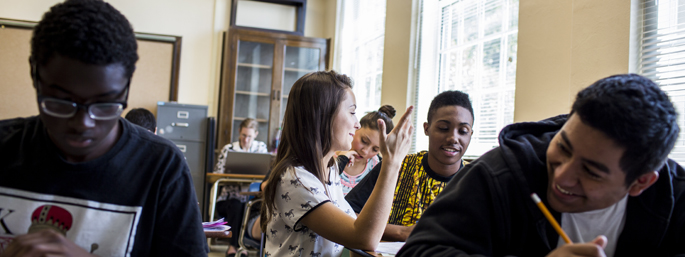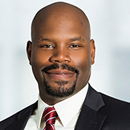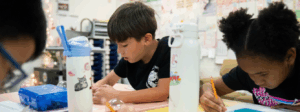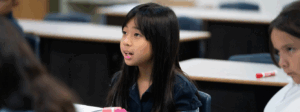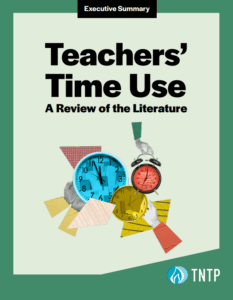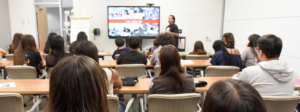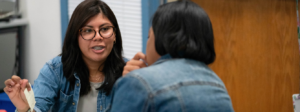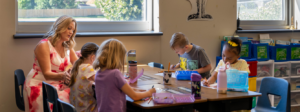Creating dramatic, sustained improvement in a school that’s been struggling for years is tough work. Sometimes it feels impossible. And too often, the schools that struggle the most are also those that educate our most vulnerable students. When the challenges run too deep to be fixed with simple solutions, it’s sometimes necessary to totally overhaul a school to create a renewed environment where teachers and students can succeed.
That seems like common sense, but when federal policy began requiring sometimes aggressive interventions for persistently poor performing schools, controversy erupted. The fact is that school turnarounds have a rocky history and a mixed track record, but there’s little evidence that milder interventions result in more meaningful changes for schools and kids. And we know for sure that inaction is not an option.
At TNTP, we are beginning to dig deeper into the turnaround challenge, to better understand the complex dynamics involved, and partner with districts to support more sustainable change in the schools that need it most.
I know first-hand just how difficult that work can be and how fundamental school culture and practices have to change for struggling schools to become excellent schools. Before federal turnaround policy created controversy, I was a turnaround principal.
In 2005, I was appointed to lead Urban Science Academy, one the lowest performing schools in Massachusetts. The majority of the teachers were force-placed, and many students were administratively assigned. Focusing on building a strong culture of pride and academic excellence became an immediate priority. One of my first staff meetings gave me an inkling of how tough that task was going to be.
At the meeting, I described a vision of a school where students and staff would be excited to begin their days; an environment rich with technology, access to high quality courses and teachers who made sure students were prepared for college. Finally, I claimed that we would go from being one of the worst schools in the state to becoming the top-performing school in the city.
That’s when the staff laughed—the kind of hearty laughter you hear when someone makes a really good joke. Because for some, it really was a joke to think our students would ever perform that well.
Despite the disenchantment, our team got to work establishing a school culture to support collaboration and leadership development among students, teachers, and families. We put forth a clear instructional vision for high quality learning and for what the school community needed to do to get there.
Culture wasn’t a magic bullet. Even after we reached the point where we had a solid group of educators who believed in our school vision (others who didn’t had moved on), they did not all have the skills to meet the increasing instructional demands. While there were some really talented teachers doing excellent work, there were others who were doing their best but still falling short, even with consistent feedback. We had to try something new.
We decided to restructure our special education program. We collapsed our separated special education classrooms and included those students in our general education classrooms, while supporting the teachers to co-plan, co-teach, and learn together how to improve their practice for all students. Despite initial concerns, teachers found over time that they were learning more by working closely together. Planning time with their teaching partners and team time with other teachers across their grade and content areas became productive learning opportunities. For the first time, we had truly authentic collaboration among teachers who only a few months earlier taught behind closed doors. We showed that if we designed quality learning experiences for our most vulnerable students, all students would benefit.
This kind of dramatic innovation is what must happen in turnaround schools—and some of it will work, and some of it won’t. At my school, we were fortunate: Between 2006 and 2010, our efforts produced extraordinary academic growth: our tenth graders went from 16 and 22 percent proficient or higher in English language arts and math to 81 and 77 percent respectively. We also achieved some of the highest graduation rates for special education students in the city.
Those were hard-won successes, but the experience helped me understand both the depth of the challenges faced in turnaround schools, and what’s possible when a school community comes together around a concrete set of high expectations, manages resources effectively and puts in place innovative strategies to support teachers and students.
As TNTP begins to serve as a turnaround partner to districts and schools, we’re asking big questions about what it really means for a school to “turn around.” What does success look like? Why do some schools create sustainable change, while others show only temporary improvement? What resource commitment is necessary to sustain gains? Given the demands of Common Core, what should instructional models look like for chronically underperforming schools?
These are some of the hardest questions to answer in education today, but it’s vital that we cut through the controversy, innovate and arrive at practical solutions; after all, these are the schools—and students—that should be our most urgent priority.
